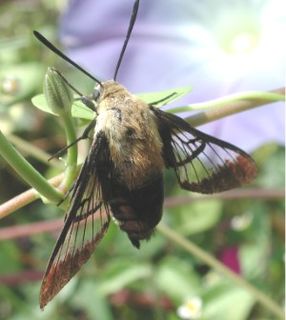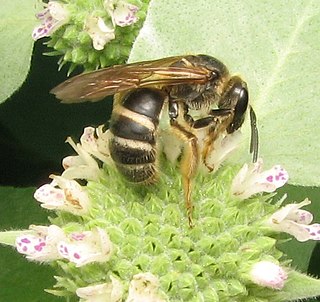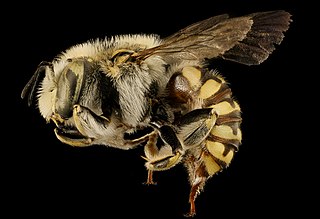
Ophrys apifera, known in Europe as the bee orchid, is a perennial herbaceous plant of the family Orchidaceae. It serves as an example of sexually deceptive pollination and floral mimicry, as well as of a highly selective and highly evolved plant–pollinator relationship.

The Bee Gees were a music group formed in 1958, featuring brothers Barry, Robin, and Maurice Gibb. The trio were especially successful as a popular music act in the late 1960s and early 1970s, and later as prominent performers of the disco music era in the mid- to late 1970s. The group sang recognisable three-part tight harmonies; Robin's clear vibrato lead vocals were a hallmark of their earlier hits, while Barry's R&B falsetto became their signature sound during the mid- to late 1970s and 1980s. The Bee Gees wrote all of their own hits, as well as writing and producing several major hits for other artists. The Bee Gees have occasionally been referred to as the Kings of Disco.

A bumblebee is any of over 250 species in the genus Bombus, part of Apidae, one of the bee families. This genus is the only extant group in the tribe Bombini, though a few extinct related genera are known from fossils. They are found primarily in higher altitudes or latitudes in the Northern Hemisphere, although they are also found in South America, where a few lowland tropical species have been identified. European bumblebees have also been introduced to New Zealand and Tasmania. Female bumblebees can sting repeatedly, but generally ignore humans and other animals.

Ophrys lutea, the yellow bee-orchid, is a species of orchid native to southern Europe, North Africa, and the Middle East, the range extending from Portugal and Morocco to Syria.

Scarabaeoidea is a superfamily of beetles, the only subgroup of the infraorder Scarabaeiformia. Around 35,000 species are placed in this superfamily and some 200 new species are described each year. Its constituent families are also undergoing revision presently, and the family list below is only preliminary.

Hemaris is a genus of sphinx moths in the subfamily Macroglossinae, which is native to the Holarctic. Their main host plants are herbs and shrubs of the teasel and honeysuckle families. Moths in genus Hemaris are known collectively as clearwing moths or hummingbird moths in the US and Canada and bee hawk-moths in Britain. The related Old World hummingbird hawk-moths, genus Macroglossum, are similar in appearance and habits. Both genera have tails that are provided with an expansile truncated tuft of hairs, but only Hemaris has the disc of the wings transparent, as these scales are dropped soon after eclosion.

The sweat bee genus Lasioglossum is the largest of all bee genera, containing over 1700 species in numerous subgenera worldwide. They are highly variable in size, coloration, and sculpture; among the more unusual variants, some are cleptoparasites, some are nocturnal, and some are oligolectic. Most Lasioglossum species nest in the ground, but some nest in rotten logs.

Trochilinae is one of the six subfamilies that make up the hummingbird family Trochilidae.
Anthidium vigintiduopunctatum is a species of bee in the family Megachilidae, the leaf-cutter, carder, or mason bees.
Anthidium rubripes is a species of bee in the family Megachilidae, the leaf-cutter, carder, or mason bees.

Anthidium porterae is a species of bee in the family Megachilidae, the leaf-cutter, carder, or mason bees. This bee was named in honour of Wilmatte Porter Cockerell.
Anthidium mormonum is a species of bee in the family Megachilidae, the leaf-cutter, carder, or mason bees.

Anthidium maculifrons is a species of bee in the family Megachilidae, the leaf-cutter, carder, or mason bees.
Anthidium latum is a species of bee in the family Megachilidae, the leaf-cutter, carder, or mason bees.
Anthidium funereum is a species of bee in the family Megachilidae, the leaf-cutter, carder, or mason bees.
Anthidium emarginatum is a species of bee in the family Megachilidae, the leaf-cutter, carder, or mason bees.
Bathanthidium barkamense is a species of bee in the family Megachilidae, the leaf-cutter, carder, or mason bees.
Anthidium aymara is a species of bee in the family Megachilidae, the leaf-cutter, carder, or mason bees.

Ham Lands is a 72-hectare Local Nature Reserve and Site of Metropolitan Importance for Nature Conservation in Ham in the London Borough of Richmond upon Thames and the Royal Borough of Kingston upon Thames.










